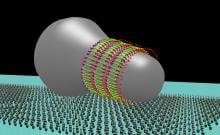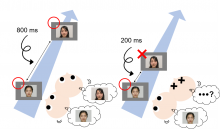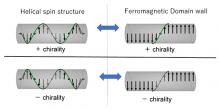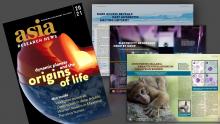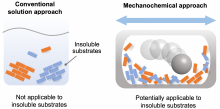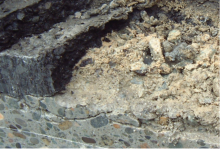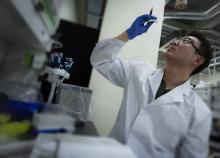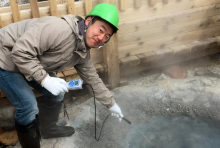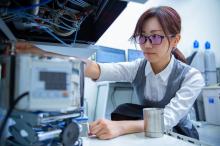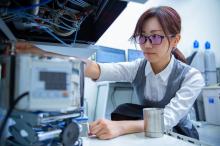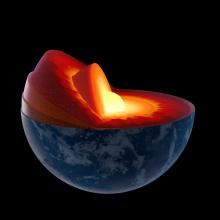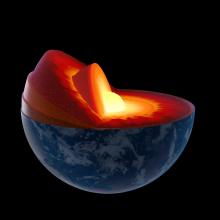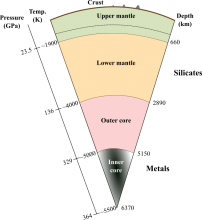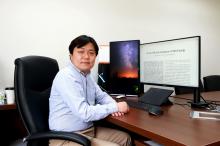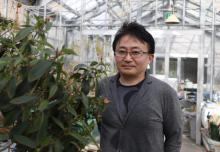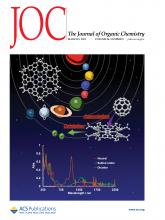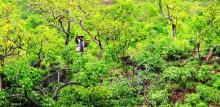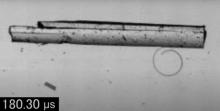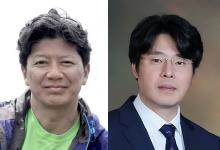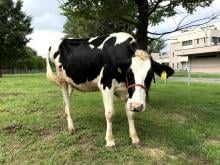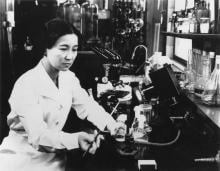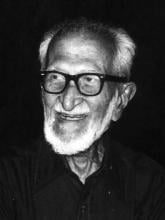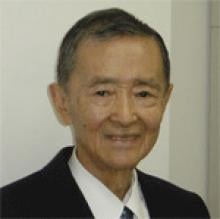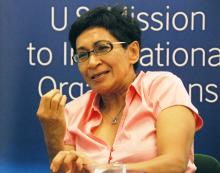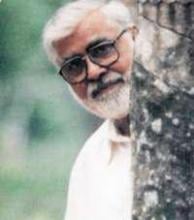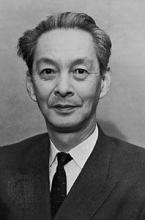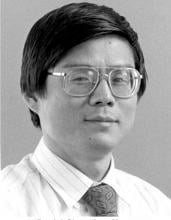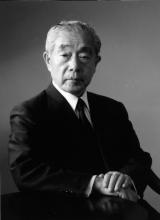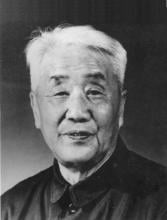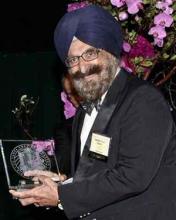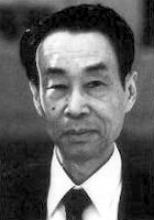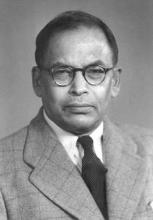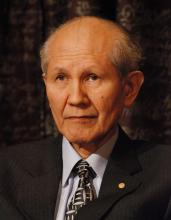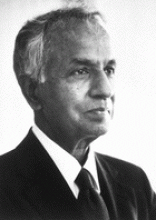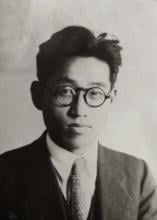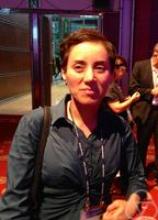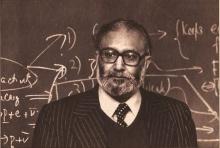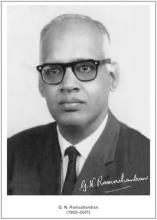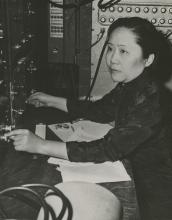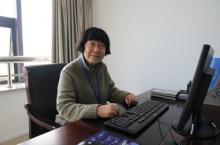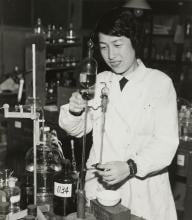Science
News
24 May 2021
In collaboration with Kanazawa University, researchers from Osaka City University used high-speed atomic force microscopy (HS-AFM) to visualize at the nanometer level the movement of individual particles within the parasitic bacterium Mycoplasma mobile. After confirming the outline on the surface of the cell structure in an immobilized state with previous data gathered from electron microscopy, the team succeeded in visualizing the real-time movements of the internal structure by scanning the outside of the cell with HS-AFM.
21 May 2021
Chuo University and Hokkaido University researchers have found that infants take less than a second to completely process visual information and have the same temporal limitation in processing visual information as seen in adults.
21 May 2021
Chirality, the lack of symmetry in matter, is an important issue in a myriad of scientific fields, ranging from high-energy physics to biology. Using magnets, a collaborative research group have furthered our understanding of how chiral information is transferred and memorized.
18 May 2021
The Asia Research News magazine brings you fascinating research stories from diverse voices in environment, technology, materials, medicine, space and social sciences. The 2021 edition is out now.
18 May 2021
Scientists from Hokkaido University have developed a rapid, efficient protocol for cross-coupling reactions, vastly expanding the pool of chemicals that can be used for the synthesis of useful organic compounds.
14 May 2021
Upcoming Solar System exploration missions will search for extraterrestrial (ET) life, but ET life may not be like Earth life. A new mass spectrometry analysis technique may allow for process-based ways to find ET life that is compositionally alien.
13 May 2021
Scientists reveal that the deterioration of modern concrete and asphalt structures is due to the presence of trace quantities of organic matter in these structures.
13 May 2021
Researchers from the Institute of Industrial Science, The University of Tokyo have shown how glasses that apparently look frozen can crystallize, which could contribute to the improvement of the stability of glassy materials
12 May 2021
Everyone has to wear a mask to curb the spread of COVID-19. However, this is an additional communication barrier for people with a hearing impairment as they cannot read lips or facial expressions behind a mask. Invited by The Hong Kong Society for the Deaf, the Lingnan Entrepreneurship Initiative of Lingnan University in Hong Kong (LU) recently designed a transparent ASTM Level 3 face mask based on the needs of hearing-impaired people, and its fully transparent and anti-reflective design makes lip-reading easier.
11 May 2021
Tony Z. Jia is a specially-appointed assistant professor and lab manager at Japan’s Earth-Life Science Institute (ELSI), based at the Tokyo Institute of Technology. He is an astrobiologist and shared highlights from his dual research/management role.
11 May 2021
Tomohiro Mochizuki tracks down viruses inside single-cell organisms thriving in boiling hot springs. His fieldwork is conducted in relatively extreme environments and, despite the significance of his investigations, he doesn’t need many fancy gadgets back at his lab at Japan’s Earth-Life Science Institute (ELSI). ARN asked Mochizuki about his virus-hunting exploits and what they involve.
11 May 2021
“By looking at substances in volcanos, lakes and hotsprings, you can start to see the ecosystems that existed billions of years ago,” says Mayuko Nakagawa, a microbiologist and specially-appointed assistant professor at the Earth-Life Science Institute (ELSI) based at the Tokyo Institute of Technology, Japan. She analyses components left by microorganisms with colleagues from various disciplines, while as a lab manager, she looks after cutting-edge equipment and visitors from different countries.
11 May 2021
火山や湖、温泉の物質からは数十億年前に存在した微生物の生態系が見えてくると語るのは、東京工業大学・地球生命研究所(ELSI)の中川麻悠子特任助教。異分野の研究者たちと共に微生物の作り出した成分を解析する傍ら、ラボマネージャーとして国内外の訪問者サポートや最先端の機材の管理などを行っている。
11 May 2021
Earth scientist Hitoshi Gomi investigates how plants are made by studying materials from the deep Earth, while creating a hospitable workplace at the Earth-Life Science Institute (ELSI) at the Tokyo Institute of Technology, Japan. He shared his research and the role of a lab manager with Asia Research News.
11 May 2021
地球の中心部の物質を研究しながら、共に研究をしている仲間が働きやすい環境を作るのが五味斎特任助教の日常だ。所属先の東京工業大学・地球生命研究所(ELSI)で地球科学者として行う研究活動と、ラボマネージャーの役目について、お話しを伺った。
06 May 2021
A stable isotope of helium, 3He, was produced by the Big Bang and a remnant of the solar nebula.
3He is included in ocean island basalts, such as in Hawaiian volcanos, indicating it has been stored somewhere in the deep Earth and carried up to the surface in upwelling plumes.
New computer simulations demonstrate that even in small amounts, helium can be dissolved in liquid iron at ultrahigh-pressure conditions, suggesting that there is a reservoir in the Earth’s core.
04 May 2021
New algorithms are much better at estimating the security level of encrypted data.
29 Apr 2021
Living beings need elements to develop properly. The study of ionomics measures and analyses the element accumulations in living organisms to determine which mineral nutrients are required and not required for growth. Associate Professor Toshihiro Watanabe from Hokkaido University’s Research Faculty of Agriculture applies this approach to learn about mineral accumulation in both plants and soil, in addition to inter-element interactions.
27 Apr 2021
A facile synthesis of two types of pyrrole-fused azacoronene with planar and double-concave π-structures was achieved.
The two electron-rich azacoronenes were found to interact with electron-deficient π-electron compounds depending on their three-dimensional structures.
Azacoronene with a curved structure was found to be less aromatic than those with a planar one based on macrocyclic π-conjugation.
22 Apr 2021
An international research team has unearthed more about the crustal growth history of the Central African shield—one of the oldest continental pieces on the planet that formed part of the supercontinent Columbia.
22 Apr 2021
A research team, led by researchers from Tohoku University, has defined the events that punctuated the crustal history Northeast Japan. Their study has revealed the main ages of the events that shaped the geological roots of Japan.
22 Apr 2021
Scientists have shown that the biological molecule PD-L1 is a potential target for the treatment of metastasized oral malignant melanoma in dogs.
22 Apr 2021
A mitochondrial peptide called MOCCI has a surprising sidekick, and they work together to regulate inflammation and immunity, Singapore researchers reveal.
19 Apr 2021
Researchers discovered, while exploring the photomechanical properties of diarylethene, that under irradiation with UV light the crystal of the compound peels off into micrometer sized crystals at a world’s fastest speed of 260 microseconds. As the material returns to its former molecular structure when exposed to visible light, the exfoliation method positions itself as a candidate for photoactuator manufacturing.
14 Apr 2021
Prof. June.M. Kwak, and Prof. Chang-Hee Cho are selected for the research funds granted by Samsung Science & Technology Foundation
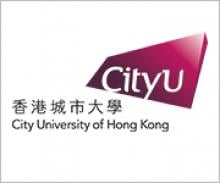
14 Apr 2021
In the era of Artificial Intelligence (AI), a novel optical “micro-comb” chip developed by a physicist from the City University of Hong Kong (CityU) has played a pivotal role in building the fastest optical neural network processor. An international research team has recently demonstrated the world’s fastest and most powerful optical neural network processor, which is capable of operating at faster than 10 trillion operations per second. When applied to handwritten digital recognition, a common benchmark in AI, it achieved an accuracy of nearly 90%. It represents an enormous leap forward for neural networks and neuromorphic processing.

09 Apr 2021
ARN's April Newsletter features research on COVID-19 antibodies, cancer-fighting hydrogels, how the brain organizes information, the 'poor man's q-bit' and the photo of the month!

09 Apr 2021
ARN's March Newsletter features women experts in honor of International Women's Day, plus the first images of muon beams, research about neural stem cells, flood prediction and how light and noise affect birds.
02 Apr 2021
Scientists in Japan have developed and tested a novel probiotic formulation to control severe diarrhea in calves, ensuring their health and reducing mortality, and in turn reducing economic loss.
Events

22 Mar 2007
Nanjing, China - This leading international conference in data mining and knowledge discovery aims to bring together practitioners and researchers both from companies, government and academia, therefore promoting the exchange of experiences, ideas and challenges.

07 Mar 2007
The ICICT is dedicated to presenting and discussing scientific results, emerging ideas, practical applications, hot topics and new trends in the area of Information and Communication Technology.

27 Aug 2007
Yogyakarta, Indonesia - This International Symposium will present the most up to date scientific information on tropical peatlands, especially their role in the global carbon cycle and levels of greenhouse gas emissions as a result of deforestation, drainage, land use change and fire.

14 Mar 2007
The International Conference in Quantum Bio-Informatics Center (QBIC) will be held at Noda Campus of Tokyo University of Science from March 14 to March 17, 2007
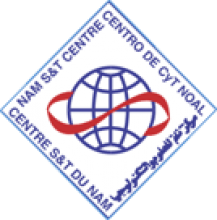
22 May 2007
Lightning causes serious losses, injuries and deaths. In South and East Asia, Africa and South America the problem is even more severe due to the high occurrence density of lighting, the large population and the rapid and unplanned industrialization. Lack of information and awareness are barriers hindering the development of protection systems.

19 Mar 2007
Singapore - This workshop aims to bring together researchers from the United Kingdom and Singapore who will share their exciting findings and views on various aspects of this field.

04 Nov 2007
Jamshoro, Pakistan - Among the objectives of this symposium is to promote original and powerful research in the field of biotechnology, bioengineering and biophysical chemistry and much more.

25 Apr 2007
Singapore - Biometrics World Asia 2007 is the only event of its type in the region where biometrics solutions providers can demonstrate, educate and communicate the benefits of biometrics applications to the business community.

07 Mar 2007
Bangkok, Thailand - This event is held in conjunction with the 5th Southeast Asia Soyfood Seminar and Tradeshow.

09 Sep 2007
Taipei, Taiwan - The theme of the congress is "Diet, Nutrition and Optimal Health: From Food Supply to Nutrigenomics."

16 Apr 2007
Istanbul, Turkey - The theme of the conference is "Consequences and control of micronutrient deficiencies - Science, Policy and Programs - Defining the Issues

29 Mar 2007
The theme of the conference is "Current Concerns in Adolescent Nutrition". Topics that will be given particular attention include health problems affecting adolescent (e.g. obesity, diabetes, anemia), eating habits and sports nutrition.

22 Feb 2007
Mumbai, India - India's economy has averaged about 8 percent growth in the past three years. The rapid growth is attributed to fast expansion in both the manufacturing and service sectors. Laboratories are a big part of these sectors.

13 Mar 2007
Singapore - A Celebration of Wildlife and the Environment, and our Relationship with the Natural World. Wildlife Asia celebrates the very best in wildlife filmmaking in Asia and throughout the world.

25 Jun 2007
Laguna, Philippines - Globalization had increasingly brought economies closer together but its palpable effects to the environment can no longer be ignored. Natural resource managers urgently need to craft local level actions and policies as well as participate in concerted efforts at the global or regional levels.

04 Jun 2007
Jakarta, Indonesia - The course will serve as a venue for current and would-be environmental managers and leaders to contextualize natural resource management concepts and principles in a globalizing world.

10 May 2007
Makati, Philippines - In the years ahead, the influences on natural resources coming from regional and global phenomena including international trade, the booming economies of China and India, and climate change could vitally complicate the already complex interactions of the various factors driving change in natural resources.

10 Apr 2007
Laguna, Philippines - Expectations of broad-based growth for fisheries-dependent communities are tempered by concerns on the precarious state of aquatic resources, especially in Southeast Asia. The link among fisheries, poverty, and sustainability raises a host of important and as yet unanswered research questions.

09 Mar 2007
Kolkata, India - This conference will provide a forum for technical exchange among related sectors for a critical review of recent developments on microalloyed steels and emerging technologies for newer applications and product development to meet the increasing demand of different industries.

11 Apr 2007
Chengdu, China - This conference provides a stimulating forum for Intelligence and Security Informatics (ISI) researchers in Pacific Asia and other regions of the world to exchange ideas and report research progress.

29 Mar 2007
Kuala Lumpur, Malaysia - MTE2007 brings together the best invention and innovative products and services by local corporations and tertiary/research institutions for Malaysians and the rest of the world. This event will be held concurrently with the 6th Invention and Innovation Competition 2007

13 May 2007
The Bam, Balakut and Sumatra earthquakes provided a window of opportunity to raise awareness of the importance of the effective implementation of a comprehensive earthquake risk reduction program in hazard-prone developing countries. SEE-5 will bring together professionals committed to reducing the impact of earthquakes on the built environment.

14 Feb 2007
Vadodara, India - The symposium aims to provide a platform for effective interaction among the scientists in the areas of Nuclear and Radiochemistry and Applications of Radioisotopes.

01 Jul 2007
Harbin, China - The field of Smart Materials and Nanotechnology is very diverse with application ranging from bioengineering to photonics. However, the emphasis for this conference will be on their applications in aerospace.
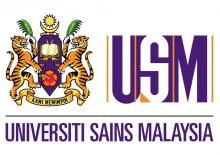
27 Mar 2007
At the end of the training course, participants should have acquired a comprehensive understanding of the ISO 22000 requirements and the necessary skills in establishing the Food Safety Management System. (Location: Penang, Malaysia)

23 Aug 2007
With the theme of “Chemistry for Development, Environment and Sustainability in Asia”, 12ACC will focus on chemistry for knowledge creation, economic development, environmental management and sustainability. 12ACC will be the biggest gathering of more than 1,000 scientists from all over the world in Kuala Lumpur, Malaysia.

10 Feb 2007
The theme is “Integration of Traditional and Innovative Technologies for Community Development”. This Congress will to provide a platform for researchers, community-level workers, technology providers and traditional knowledge centres to exchange ideas and experiences on the effective blending of ancient and modern innovative technologies.

03 Dec 2007
Research work in the area of mycology will enable us to manage fungal diseases, exploit fungi for food, feed, chemicals, and environmental waste management. The conference is targeted for academia, scientists, technologists, managers, entrepreneurs, policy makers, and members of corporate and financial sectors.

12 Mar 2007
Members of the media are one of the key stakeholders in the biotechnology arena because they are an influential source of information on science and technology to lay audiences. MABIC will be funding two Malaysian journalists to attend this workshop.

06 Feb 2007
For the first time, this review will be launched in Malaysia. This is a timely affair for Malaysia as agricultural biotechnology has been recognized as the first thrust in the National Biotechnology Policy. Moreover, the biosafety bill has been read in the Parliament last month and is expected to be passed early next year.
Giants in history
Chinese biochemist Chi Che Wang (1894 - 1979), one of the first Chinese women to study abroad, advanced to prominent research positions at American institutions including the University of Chicago and the Northwestern University Medical School.
Ruby Sakae Hirose (1904 – 1960) was a Japanese-American scientist whose research contributed significantly to our understanding of blood clotting, allergies and cancer.
Chinese electron microscopy specialist Li Fanghua (6 January 1932 – 24 January 2020) facilitated the high-resolution imaging of crystal structures by eliminating interference.
Sálim Moizuddin Abdul Ali (12 November 1896 – 20 June 1987), commonly referred to as the Birdman of India, was the first person to conduct systematic surveys of birds from across India.
Haisako Koyama (1916 – 1997) was a Japanese solar observer whose dedication to recording sunspots – cooler parts of the sun’s surface that appear dark – produced a sunspot record of historic importance.
Michiaki Takahashi (17 February 1928 – 16 December 2013) was a Japanese virologist who developed the first chickenpox vaccine.
Toshiko Yuasa (11 December 1909 – 1 February 1980) was the first Japanese female physicist whose research on radioactivity shed light on beta decay – the process in which an atom emits a beta particle (electron) and turns into a different element.
Angelita Castro Kelly (1942-2015) was the first female Mission Operations Manager (MOM) of NASA. She spearheaded and supervised the Earth Observing System missions during its developmental stage.
Malaysia’s first astrophysicist, Mazlan binti Othman (born 11 December 1951) was instrumental in launching the country’s first microsatellite, and in sending Malaysia’s first astronaut, Sheikh Muszaphar Shukor, into space.
Known as Mr. Natural Rubber, chemist and researcher B. C. Shekhar (17 November 1929 – 6 September 2006) introduced a number of technical innovations that helped put Malaysia’s natural rubber industry on the world map.
Shinichiro Tomonaga (31 March 1906 – 8 July 1979), together with Richard Feynman and Julian Schwinger, was awarded the Nobel Prize in Physics in 1965, for their contributions to advance the field of quantum electrodynamics. Tomonaga was also a strong proponent of peace, who actively campaigned against the proliferation of nuclear weapons and promoted the peaceful use of nuclear energy.
South Korean theoretical physicist Daniel Chonghan Hong (3 March 1956 – 6 July 2002) achieved fame in the public sphere through his research into the physics of popcorn.
Japanese chemist Kenichi Fukui (4 October 1918 – 9 January 1998) was the first Asian scientist to be awarded the Nobel Prize in Chemistry. Together with Roald Hoffman, he received this honour in 1981 for his independent research into the mechanisms of chemical reactions.
Chinese palaeontologist, archaeologist and anthropologist Pei Wenzhong (January 19, 1904 – September 18, 1982) is regarded as a founder of Chinese anthropology.
Physicist Narinder Singh Kapany (31 October 1926 – 4 December 2020) pioneered the use of optical fibres to transmit images, and founded several optical technology companies. Born in Punjab, India, he worked at a local optical instruments factory before moving to London for PhD studies at Imperial College. There, he devised a flexible fibrescope to convey images along bundles of glass fibres.
Japanese physicist Ukichiro Nakaya (1900-1962) made the world’s first artificial snowflakes. He started his research on snow crystals in the early 1930s at Hokkaido University, where there is an unlimited supply of natural snow in winter. By taking over 3,000 photographs, he established a classification of natural snow crystals and described their relationship with weather conditions.
The field of solid-state ionics originated in Europe, but Takehiko Takahashi of Nagoya University in Japan was the first to coin the term ‘solid ionics’ in 1967. ‘Solid-state ionics’ first appeared in 1971 in another of his papers, and was likely a play on ‘solid-state electronics’, another rapidly growing field at the time.
Charles Kuen Kao (Nov. 4, 1933 to Sept. 23, 2018) was an engineer who is regarded as the father of fibre optics. His work in the 1960s on long distance signal transmission using very pure glass fibres revolutionized telecommunications, enabling innovations such as the Internet.
Chika Kuroda (24 March 1884 – 8 November 1968) was a Japanese chemist whose research focussed on the structures of natural pigments.
Motoo Kimura (13 November 1924 – 13 November 1994) was a Japanese theoretical population geneticist who is best remembered for developing the neutral theory of molecular evolution.
Meghnad Saha (6 October 1893 – 16 February 1956) was an Indian astrophysicist best known for formulating the Saha ionization equation which describes the chemical and physical properties of stars.
Sir Jagadish Chandra Bose (30 November 1858 – 23 November 1937) was a scientist and inventor who contributed to a wide range of scientific fields such as physics, botany and biology.
Osamu Shimomura (27 August 1928 – 19 October 2018) was a Japanese organic chemist and marine biologist who dedicated his career to understanding how organisms emitted light.
Subrahmanyan Chandrasekhar (19 October 1910 – 21 August 1995) was an Indian astrophysicist who studied the structure and evolution of stars.
Joo-myung Seok (November 13, 1908 – October 6, 1950) was a Korean butterfly entomologist who made important contributions to the taxonomy of the native butterfly species in Korea.
Mathematician Maryam Mirzakhani (12 May 1977 – 14 July 2017) was the first and only woman and Iranian to date to win the Fields Medal in 2014 for her work on curved surfaces.
Sir Chandrasekhara Venkata Raman (7 November 1888 – 21 November 1970) was an Indian physicist who performed ground-breaking research in the field of light-scattering.
Mohammad Abdus Salam (29 January 1926 – 21 November 1996) was a theoretical physicist and the first Pakistani to receive a Nobel Prize in science.
Srinivasa Ramanujan (22 December 1887 – 26 April 1920) was a math prodigy and widely considered one of India’s greatest mathematicians. Despite having almost no formal training in mathematics, he made substantial contributions to mathematical analysis, number theory, infinite series and continued fractions.
Gopalasamudram Narayanan Ramachandran (8 October 1922 – 7 April 2001) is best known for developing the Ramachandran plot to understand the structure of short chains of amino acids, known as peptides.
Hitoshi Kihara (1893 – 1986) was one of the most famous Japanese geneticists of the 20th century. One of his most significant contributions was identifying sex chromosomes (X and Y) in flowering plants.
Chien-Shiung Wu (31 May 1912 – 16 February 1997) was an experimental physicist who made several important contributions to nuclear physics. Wu worked on the Manhattan Project – a top-secret program for the production of nuclear weapons during World War II and helped to develop a process for separating uranium into U235 and U238.
Meemann Chang (born 17 April 1936) is a Chinese palaeontologist who studied the fossils of ancient fish to understand the evolution of life. By examining fossils, she uncovered new insights on how vertebrates, animals with a backbone, migrated from the sea and became adapted to live on land.
Bibha Chowdhuri (1913 – 2 June 1991) was an Indian physicist who researched on particle physics and cosmic rays. In 1936, she was the only female to complete a M.Sc. degree at the University of Calcutta.
Lin Lanying (7 February 1918 – 4 March 2003) was a Chinese material engineer remembered for her contributions to the field of semiconductor and aerospace materials. Lanying was born into a family who did not believe in educating girls and she was not allowed to go to school.
Japanese geochemist Katsuko Saruhashi developed the first method and tools for measuring carbon dioxide in seawater



